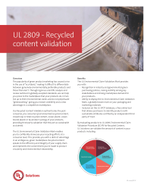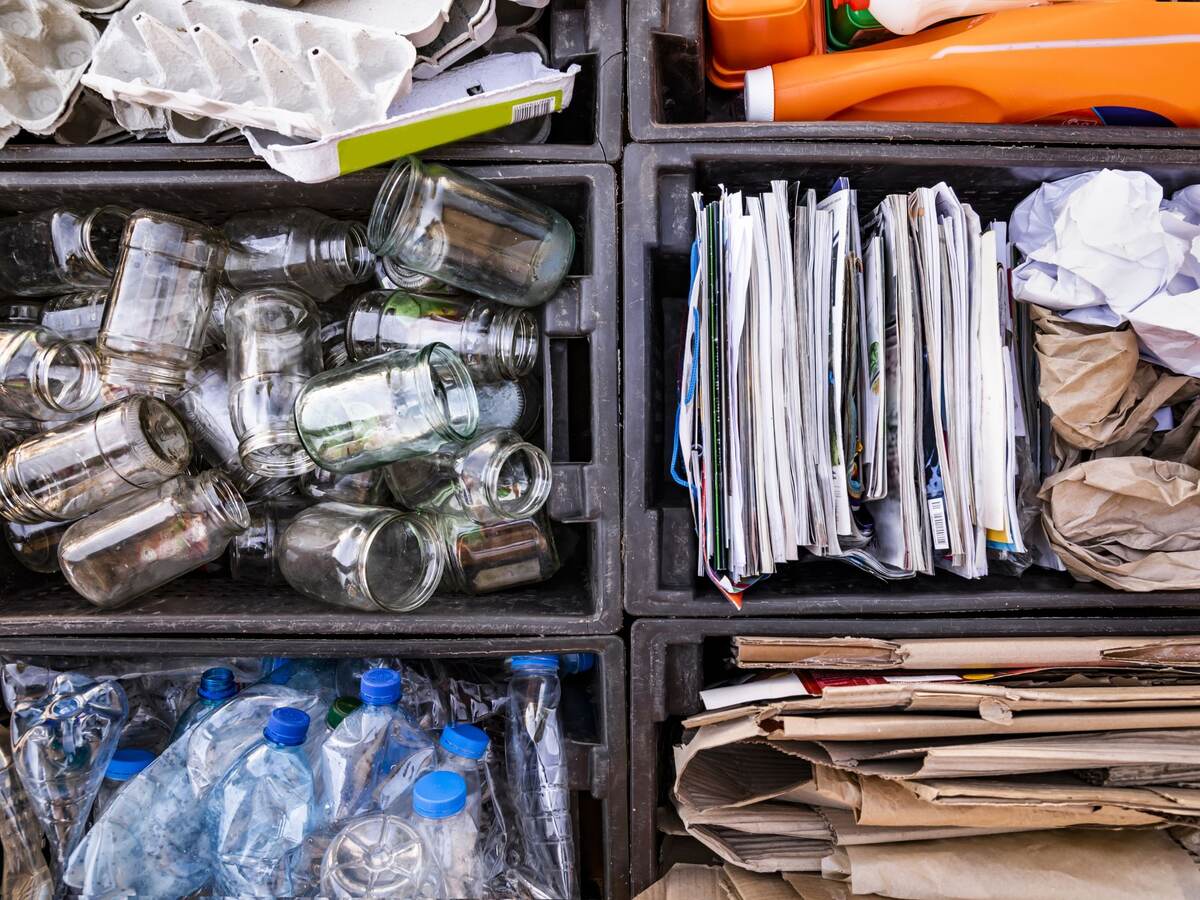
Recycled content validation
Recycle, reuse, reduce: We’ve all heard it. But what exactly is recycled content and how can we verify what is and isn’t recycled?

Why are we hearing so much about recycled content lately? Brand owners and retailers are facing extraordinary pressure to address the environmental and social issues exacerbated by the impact of their products and supply chains.
So how do we make sure we are all talking about the same thing? The popularity of green product marketing has caused a rise in the use of substantiated and unsubstantiated eco-claims, making it difficult to differentiate between genuine products with environmental benefits or attributes and those that aren’t. By adhering to rigorous scientific analysis and review outlined in globally accepted standards, you can demonstrate to the marketplace that your products do, in fact, live up to their environmental claims and do not perpetuate greenwashing. This helps provide your product more credibility and offers a competitive advantage — differentiation — in a marketplace where greenwashing reigns.
As part of UL Solutions Environmental Claim Validation (ECV) Program, our UL ECVP 2809 for Recycled Content defines recycled content as material that has been reprocessed from recovered (reclaimed) materials by means of a manufacturing process and then made into a final product, material or component for incorporation into a product. The proportion of recycled content within a product is measured by mass. Pre -consumer (post-industrial) recycled content (PIR) is material that has never reached the end user, having been diverted from the waste stream during a manufacturing process. This excludes the reutilization of materials generated in a process and capable of being reused as a substitute for a raw material without being modified in any way, which could be considered as process efficiency. Post-consumer recycled content (PCR) is material that has reached its intended end user and is no longer being used for its intended purpose.
Many materials in our world are commonly recycled. For example, batteries made of lithium and cobalt are commonly used in electric vehicles, computers, and cell phones, and producers of these batteries are looking for ways to source recycled content to manufacture them as supplies of lithium and cobalt are finite. The steel and aluminum in beverage cans are easy to recycle since they degrade very slowly over time, and we can all do our part by recycling aluminum cans, adding to the availability of recycled material to be used as part of the recycled content. Paper, cardboard, plastic and glass have been recycled for decades around the world and are commonly used in many common types of products globally with a high demand for these materials.
As noted, the demand for some of these recycled materials far outstrips the supply. This, of course, leads to higher prices for them as well as the propensity for bad actors to greenwash the true recycled content of their products to cheat consumers into buying what they believe are sustainable items when they are not. Because of this, consumers and regulators are demanding third-party reviewed validations and certifications of the recycled content in the products they buy and oversee to minimize supply chain risks.
UL 2809 ECVP defines a few ways in which recycled content can be gathered. In a closed loop system, materials are reclaimed by, returned to, and reused at the same material technical application equivalence or performance specifications as when the material was first used. This is an excellent example of circular economy activity.
A by-product synergy is the matching of under-valued waste or by-product streams from one facility with potential users at another facility to create new revenues or savings with potential social and environmental benefits.
Ocean plastics are wastes that have entered the ocean and is recovered from there.
Ocean-bound plastics are wastes that have been recovered from a coastline or major waterway that feeds into an ocean within 30 miles of a coastline.
Prevented/diverted ocean plastics are wastes diverted before being dumped into the ocean, on a coastline or into a major waterway.
An important reason of getting third-party verifications and certifications of your recycled content is to minimize risks. Consumers are more connected and knowledgeable than ever. If a company is caught by an alert consumer of greenwashing, that one consumer can report on social media and be seen by millions of other consumers. This puts the reputation and future of the company at risk.
Conversely, when a company proactively seeks third-party recognition of their recycled content and then makes that certification part of their marketing, the company can increase their confidence and trust among these conscious consumers.
Being able to substantiate green claims on packaging can directly lead to enhanced market acceptance by the public. Consumers are much more likely to accept a claim if it is backed by a third-party label.
We can assess your products’ recycled content source whether it is post-consumer, pre-consumer (post-industrial), closed loop, ocean plastic, ocean-bound plastic or by-product synergy content, providing third-party validation that your sustainability claims are accurate.
After successful completion of the validation, the product will receive a UL Environmental Claim Validation certificate, SPOT database listing, as well as the ECV Mark. The Mark enables you to confidently showcase your use of circular material efforts at a consumer level. This provides you with a distinct advantage in an ambiguous, green marketplace. Recycled content speaks to the efficiency and integrity of your supply chain and represents the commitment you’ve made to product circularity and environmental stewardship.

Recycled content validation
Thanks for your interest in our products and services. Let's collect some information so we can connect you with the right person.